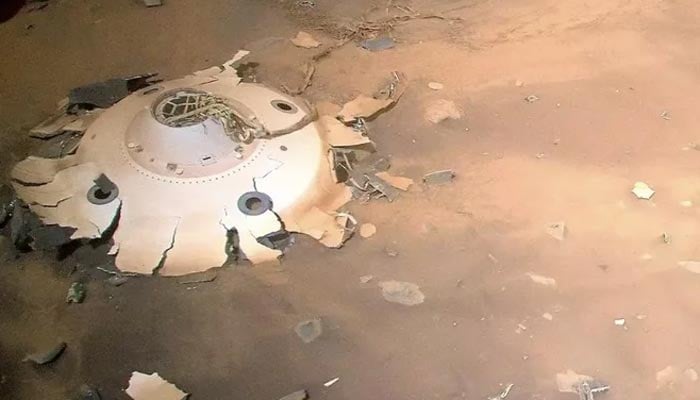The National Aeronautics and Space Administration’s (Nasa) Ingenuity Mars Helicopter, originally designed for a mere five flights, has become the first aircraft to achieve controlled, powered flight on another planet as it impressively completed 72 missions on the Red Planet.
During one of these extraordinary missions in 2022, Ingenuity ecountered what appeared to be an “otherwordly” spacecraft debris, scattered across the Martian landscape.
Describing the image to The New York Times, Ian Clark, a Perseverance parachute system engineer, said that it features a “sci-fi element” which made it seem “otherwordly”.
“They say a picture’s worth 1,000 words, but it’s also worth an infinite amount of engineering understanding,” he said.
However, before jumping to conclusions about extraterrestrial involvement, it’s essential to note that the debris ended up on Martian surface as a result of human activity instead of an alien.
According to Indy100, the image showed landing equipment that was used to help Ingenuity and the Perseverance Rover land on the surface of Mars in 2021. In the photos, viewers can see the upright backshell and the debris which is thought to have impacted the surface at about 126 kilometres per hour.
“The backshell’s protective coating appears to have remained intact during Mars atmospheric entry. Many of the 80 high-strength suspension lines connecting the backshell to the parachute are visible and also appear intact,” the space agency said.
“Spread out and covered in dust, only about a third of the orange-and-white parachute — at 70.5 feet (21.5 meters) wide, it was the biggest ever deployed on Mars — can be seen, but the canopy shows no signs of damage from the supersonic airflow during inflation.”
Nasa’s Perseverance Rover was launched to Mars with the Ingenuity helicopter — also known as Ginny — attached to it.


